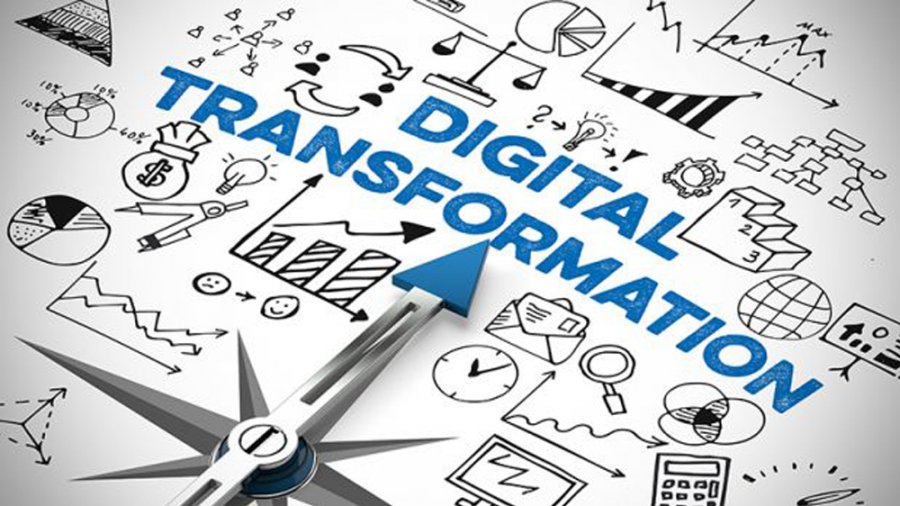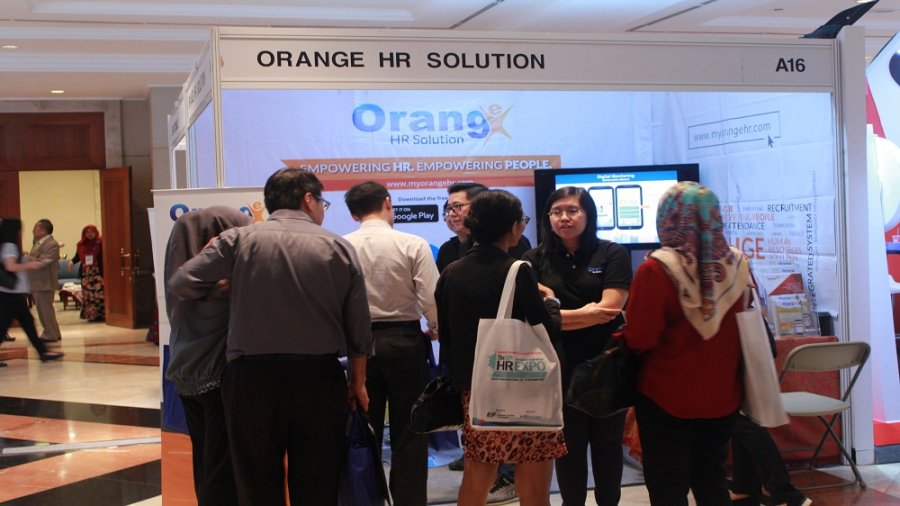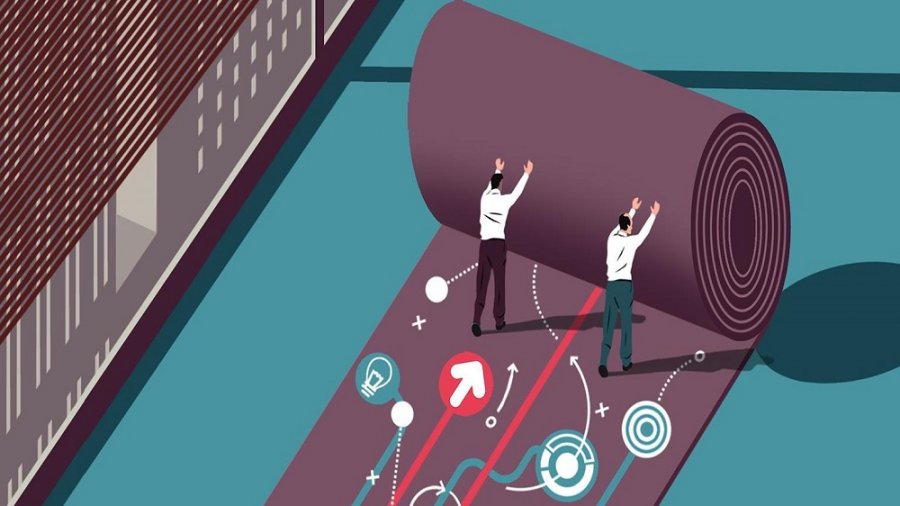Latest News & Insights
Explore the latest trends, tips, and news in HR

Fungsi HRIS dalam Rumah Sakit: Meningkatkan Efisiensi dan Kualitas Pelayanan SDM Kesehatan
Fungsi HRIS dalam Rumah Sakit: Meningkatkan Efisiensi dan Kualitas Pelayanan SDM Kesehatan
Rumah sakit merupakan lembaga pelayanan kesehatan yang memiliki struktur organisasi kompleks dan tenaga kerja yang beragam, mulai dari dokter, perawat, tenaga laboratorium, farmasi, administrasi, hingga staf pendukung. Dengan jumlah pegawai yang besar dan sistem kerja yang berjalan 24 jam, pengelolaan sumber daya manusia menjadi tantangan yang tidak sederhana.Di sinilah Human Resources Information System (HRIS) berperan penting bukan hanya sebagai alat administrasi, tetapi juga sebagai sistem manajemen strategis yang membantu rumah sakit bekerja lebih efisien, akurat, dan terintegrasi.1. Manajemen Data PegawaiSalah satu fungsi utama HRIS adalah menyimpan dan mengelola seluruh data personal,...

HR dan Transformasi Digital: Dimulai Dari Mana?
Teknologi Informasi menjadi bagian dari kebutuhan kehidupan saat ini. Kemajuan teknologi ini merubah cara hidup menjadi mudah, cepat dan efektif. Kemajuan teknologi ini juga membawa perubahan yang begitu besar dalam proses bisnis secara global. Adaptasi teknologi yang terus berkembang ini harus didasarkan pada visi, misi dan strategi bisnis yang jelas. Dalam hal ini, peranan departemen HR sangatlah penting.Transformasi digital telah menjadi topik hangat di kalangan bisnis selama lebih dari lima tahun, membungkus setiap industri dan merambah ke setiap sudut perusahaan. Di luar kehebohan atas potensi yang dimilikinya, transformasi digital tetap menjadi pemikiran utama untuk alasan yang jelas yaitu sulit untuk mengeksekusi dan mengoperasionalkan.Dimulai dari mana, bagaimana transformasi digital dapat dioperasionalkan? Integrasikan data, bukan sistemJadi, bagaimana seorang profesional SDM dapat meningkatkan jumlah kandidat yang memenuhi syarat atau meningkatkan keterampilan karyawannya? Dan ini menjadi tantangan nomor satu yang dihadapi organisasi ketika mencoba mengubah diri mereka secara digital adalah akses ke data itu sendiri.Organisasi SDM seharusnya saat ini fokus pada integrasi data, bukan sistem. Sistem berbasis cloud yang baru pada akhirnya akan menciptakan silo data cloud baru, sehingga menggeser masalah sistem integrasi dari lokal ke cloud. Oleh karena itu, langkah pertama menuju transformasi SDM secara digital adalah integrasi data.Jangan bergantung pada IT lagiIntegrasi data seharusnya tidak mengintimidasi para profesional HR karena seperti kita tahu, data tersebut merupakan data HR, dimana tim IT tidak tahu menahu tentang hal ini, dan tim internal HR sendiri yang mengeitahui data tersebut dengan baik.Sehingga, pihak HR lah yang mengetahui dengan jelas sistem atau platform integrasi yang cocok untuk membantu pekerjaannya. Sehingga, tidak perlu menunggu tim IT melakukan hal tersebut. Merubah SDM menjadi fungsi analitik yang lebih berorientasi data memang sulit, namun perlu diingat tim HR nantinya akan menyajikan solusi integrasi data dari lapangan sehingga dapat memberikan saran atau masukan untuk meningkatkan kinerja bisnis. Mulai dari mengintegrasikan data melalui Orange HR, maka semua HR sedang mengalami transformasi. Orange HR merupakan sistem HR yang menyediakan fungsi HR lengkap dan terintegrasi yang dapat membantu perusahaan dalam melakukan transformasi digital HR.

Tantangan dan Peran Generasi Milenial di Indonesia
Merujuk pada hasil penelitian Deloitte bertajuk "The 2017 Deloitte Millenial Survey", 73 persen responden milenial asal Indonesia memiliki opini yang positif dan siap berdampingan dengan generasi Z slug mereka yang kini berusia 18 tahun ke bawah. Riset Deloitte dimulai pada tahun 2011 dimana generasi milenial adalah kelompok yang sedang baru-barunya kariernya di tempat kerja. Dalam beberapa tahun lagi mereka akan berdampingan dengan generasi Z. Riset Deloitte mengungkap bahwa milennial, terutama di negara berkembang termasuk Indonesia, memiliki opini positif yang besar terhadap generasi Z. Generasi Z dianggap melek teknologi dan punya kemampuan berkreativitas yang baik. Riset ini bisa menjadi kabar menggembirakan bagi pemerintah sebab tingkat optimisme generasi milenial Indonesia atas generasi Z jauh lebih tinggi ketimbang pandangan generasi milenial di negara-negara maju di Eropa.Banyak yang mengatakan generasi milenial termasuk dalam generasi yang istimewa. Mengapa dikatakan istimewa karena generasi ini lahir pada masa perkembangan teknologi yang semakin maju. Namun generasi ini juga mempunyai banyak tantangan, banyaknya arus informasi yang masuk tanpa dapat dibendung membuat generasi ini harus pintar-pintar memilih informasi mana saja yang akan diambil untuk sesuatu hal yang bermanfaat.Generasi Milenial mempunyai tantangan dalam persaingan pendidikan dan pekerjaan yang lebih kompetitif. Oleh sebab itu generasi ini diharapkan dapat mempersiapkan skills dan kemampuan baik prestasi akademis ataupun non akademis. Hal yang tidak kalah penting yang perlu diperhatikan oleh generasi milenial adalah makin menurunnya nilai sosial yang makin bergeser. Akibat masuknya pengaruh budaya Barat baik dari tayangan tv, dvd ataupun dari film-film banyak mempengaruhi pada nilai-nilai sosial yang seharusnya kita junjung tinggi seperti kesopanan dalam berperilaku.Di sinilah peran pemuda, sebagai sosok yang muda, yang dinamis, yang penuh energi, yang optimis, diharapkan untuk dapat menjadi agen perubahan yang bergerak dan berusaha untuk sedekat mungkin dengan dunia yang terbuka luas. Pemuda, diharapkan bisa membawa ide-ide segar, pemikiran-pemikiran kreatif dengan metode thinking out of the box yang inovatif, sehingga dunia tidak melulu hanya dihadapkan pada hal-hal itu saja dan tidak pernah berkembang. Dengan kata lain pemuda diharapkan menjadi pemimpin masa depan yang lebih baik dari pemimpin masa kini. Pemuda diharapkan untuk menjadi change agent, yaitu pihak yang mendorong terjadinya transformasi dunia ini ke arah yang lebih baik melalui efektifitas, perbaikan dan pengembangan.Saat telah terjun ke pekerjaan, maka perusahaan pun harus mengikuti dan mengoptimalkan kinerja dari generasi milenial yang selalu penuh optimis, dinamis dan penuh energi ini.

Strategi Mengoptimalkan Kinerja Generasi Milenial
Milenial (juga dikenal sebagai Generasi Y) adalah kelompok demografi setelah Generasi X (Gen-X). Tidak ada batas waktu yang pasti untuk awal dan akhir dari kelompok ini. Para ahli dan peneliti biasanya menggunakan awal 1980-an sebagai awal kelahiran kelompok ini dan pertengahan tahun 1990-an hingga awal 2000-an sebagai akhir kelahiran. Milenial pada umumnya adalah anak-anak dari generasi Baby Boomers dan Gen-X yang tua. Milenial kadang-kadang disebut sebagai "Echo Boomers" karena adanya 'booming' (peningkatan besar) tingkat kelahiran di tahun 1980-an dan 1990-an.Generasi ini disebut-sebut sebagai generasi yang produktif dan bangga apabila dapat bekerja lebih cerdas, bukan lebih keras. Meskipun belum tentu semua Gen Y memiliki sikap tersebut, tetapi setiap perusahaan harusnya sadar bahwa kemampuan mereka adalah peluang besar untuk perkembangan perusahaan. Namun sayang, generasi ini juga mudah pindah kerja bila sedikit saja merasa tidak nyaman. Selain itu, mereka sangat pemilih bila ingin melamar pekerjaan. Menurut sebuah survei yang juga dilakukan JobStreet, dari sebuah lowongan pekerjaan, generasi ini sangat memperhatikan keuntungan bekerja di sebuah perusahaan, antara lain fasilitas dan kenyamanan bekerja. Selain gaji tinggi, generasi milenial juga ingin perusahaan tempatnya bekerja dapat menyediakan beragam pelatihan serta pengembangan diri. Lantas bagaimana cara menghadapi generasi ini? Seperti dikutip dari fortune.com berikut strateginya:1. Lakukan perubahanGenerasi milenial adalah generasi yang merasa tertantang dengan lingkungan kerja yang melibatkan kreativitas dan perubahan. Oleh karena itu, undanglah karyawan muda tersebut untuk bergabung dalam tim development bisnis dan dorong mereka untuk menyampaikan ide. Jika hal tersebut sudah dilakukan, jangan kaget apabila dari mereka keluar ide-ide yang tidak terduga sebelumnya.2. Berikan mereka kebebasan/kemandirianJangan memberikan arahan terlalu banyak tentang cara menyelesaikan suatu pekerjaan. Generasi millennium tidak terlalu suka banyak campur tangan dari atasan ketika diserahi sebuah tanggung jawab berilah ruang bagi mereka untuk merealisasikan inisiatifnya.3. Keberagaman dalam lingkungan kerjaHargai dan terima perbedaan SARA di tempat kerja. Terlebih lagi, memiliki keberagaman ide, perspektif dan pengalaman dari karyawan juga merupakan keuntungan tersendiri bagi perusahaan.4. Ajak mereka berbicara tentang teknologiBukan rahasia lagi bahwa sebagian generasi milenial di dunia dekat dengan teknologi. Jadi, ajaklah talent muda Anda untuk berdiskusi tentang teknologi. Akan banyak peluang muncul bahwa mereka akan memberikan ide-ide menarik yang akan membuat performa perusahaan meningkat dengan bantuan teknologi.5. Tanamkan makna atau nilai dalam pekerjaan merekaBerdasarkan penelitian yang diselenggarakan oleh Deloitte Milenial Survey 2015, sebagian besar generasi milenial memilih pekerjaan berdasarkan "sense of purpose" atau tujuan utama suatu pekerjaan dilakukan. Mereka ingin sekali membuat perbedaan dan akan dengan mudah pindah ke perusahaan lain jika mampu memberikan makna dalam hidup mereka.6. Berinvestasi pada Pendidikan yang berkesinambunganHal ini membuat mereka cenderung senang bekerja dengan bos maupun atasan yang dapat menghargai dan melihat mereka sebagai seorang individu, bukan semata-mata asset. Mereka ingin agar perkembangan kompetensinya juga diperhatikan oleh perusahaan.7. Memberikan feedback yang jujur secara regularSalah satu cara lain untuk mengoptimalkan kinerja Gen-Y adalah dengan kesedian memberikan feedback terhadap hasil kerja mereka. Mereka dapat menerima masukan maupun kritik sepanjang itu bersifat konstruktif.Mungkin butuh waktu untuk sepenuhnya memahami kebutuhan dan keinginan generasi millennial, tetapi yang terpenting adalah Anda harus mengakui pentingnya menarik perhatian generasi ini karena mereka adalah generasi yang akan menjalankan perusahaan Anda di masa yang akan datang. Pada dasarnya, kunci utama dalam memberikan memotivasi karyawan adalah dengan membuat mereka merasa dihargai, diberdayakan dan dilibatkan di tempat kerja, tidak peduli apapun jenis generasinya. Sehingga, ketiga hal tersebut tetap harus menjadi pedoman disamping 7 strategi yang telah disebutkan di atas.

Mengelola Perbedaan Generasi Angkatan Kerja
Pergantian generasi di dunia kerja menuntut perusahaan untuk melakukan perubahan dalam tata kelola sumber daya manusia. Di dunia kerja saat ini sudah tidak asing dengan rekan kerja lintas generasi. Yaitu, generasi baby boomers yang paling senior, generasi X, milenial atau generasi Y, hingga generasi Z yang paling muda di kantor.Tiap generasi ternyata memiliki karakteristik masing-masing yang menentukan kelebihan dan kekurangan di tempat kerja. Bekerja sama dengan berbagai orang memang bukan hal yang mudah. Menyatukan pikiran antar sesama usia saja sudah banyak tantangannya, apa lagi dengan orang yang berusia lebih tua atau muda. Perbedaan pandangan dan perspektif sering kali menimbulkan masalah komunikasi hingga memicu konflik tersendiri.Generasi baby boomers atau yang lahir 1940-an hingga awal 1960-an saat ini kebanyak sudah menikmati pensiun. Namun tidak menutup kemungkinan mereka masih bekerja, etos kerja yang kuat dan dedikasi tinggi kepada perusahaan juga menjadi karakter dari generasi ini. Kemudian generasi X yang lahir tahun 1960-an hingga akhir 1980-an, mereka yang lahir sebagai generasi X, umumnya lebih menghargai keseimbangan antara pekerjaan dan kehidupan pribadi tetapi mereka fleksibel, mampu beradaptasi dengan baik, dan senang mengembangkan kemampuan yang menunjang karier mereka serta problem solver yang baik. Beda genarasi beda pula karakternya, generasi Y atau generasi milenial yang lahir tahun 1980an hingga 1995. Generasi ini yang sekarang banyak ada diperusahaan. Meereka cenderung kreatif, berpendidikan tinggi, dan fasih dengan teknologi. Makanya, generasi ini biasanya punya pola kerja yang lebih efisien. Dan generasi yang paling muda yaitu generasi Z di atas 1995an. Karena rata-rata masih berusia muda, belum banyak karakteristik yang bisa digali dari mereka. Teknologi adalah hal yang nggak bisa dipisahkan dari keseharian mereka, membuat mereka kreatif dan mampu melakukan multi-tasking dengan baik saat bekerja. Karena menghadapi persaingan kerja yang lebih ketat dibandingkan generasi sebelumnya, gen-Z cenderung realistis soal kerjaan. Mereka tertarik untuk menjadi pionir lewat wirausaha, tapi juga nggak ragu belajar dan bekerja keras pada perusahaaan tempatnya bekerja.Lantas, bagaimana menangani lintas generasi ini di perusahaan?Tingkatkan engagement karyawan satu dengan yang lainnya bisa melalui proyek yang dikerjakan,Brain stroming bersama,Menyebarkan visi dan semangat yang sama.Memang perbedaan tidak dapat dihilangkan, namun setidaknya tidak buat perbedaan tersebut makin besar. Dan, memang sebagian besar literatur atau penelitian terkait lintas generasi ini masih mengacu pada budaya Barat. Namun, setidaknya kita mendapatkan sedikit gambaran soal perbedaan antargenerasi ini untuk kemudian disesuaikan dengan situasi di dunia kerja. Dan ke depannya, yang harus dipahami adalah peran Gen Y sebagai pengelola dan pemimpin. Sementara Gen X dan veteran mendukung dari belakang, dengan memastikan prosesnya. Gen X dan baby boomers menjadi konselor para Gen Y. Hakikatnya, setiap generasi harus berkolaborasi dengan kelebihan yang ada, bukan berjalan masing-masing.

Data-Driven Decision Making. Analytics Helps Human Resources
"The goal is to turn data into information and information into insight." - Carly Fiorina, Former CEO, HPToday, as an HR professional, you're expected to do more than just manage the workforce. The work environment demands that you be a critic, a nerdy statistician, giving analytical input and key insights about the way your organization functions.Data is the key to strategy. It's not about how large your dataset is, but about how well you use it. To utilize data, you first need to decode what's relevant and useful. But where will you find the time and resources to analyze and leverage this information?People analytics, or HR analytics, in essence takes the company's wealth of employee data, like employee profiles, appraisal data, workers' compensation issues, benefits and more. And links it with the organization's business goals to give meaningful, actionable insights.A workforce's demographics can provide vital clues about the future, particularly in situations in which the profile of a company's employees is ageing. In a climate in which there's intense competition for fresh talent, AnaIytic lets HR departments take a primary role in adapting, surviving and thriving. And of course, better efficiency tends to mean lower long-term costs. What tools can you use to analyse HR data?Self-service systems can provide HR departments with real-time information directly from HR data, displayed clearly and simply. These systems can come with detailed absence and workforce dashboards designed to reveal valuable trends and fresh perspectives. Because HR data has many uses, HR dashboards can be personalised; and role-based security means the right level of confidentiality is maintained. Like ORANGE HR Solution these systems allow integrated organisation charting, perfect for designing processes and strategies for change. And it's easy to create a roadmap to navigate.

Orange HR Solution at HR Expo 2017
Jakarta, December 18, 2017 - Orange HR Solution with the tag line Empower HR. Empower People. attended HR Expo 2017 held by Intipesan at the Jakarta Convention Center on 13-14 December 2017. HR EXPO is a showcase summit for HR Practitioners Indonesia held annually in December. This event became the center of the development of human resources management knowledge in Indonesia, so it has a positive contribution to the development of human resource management practices in Indonesia.Activities are held at HR Expo includes seminars on the issue - the actual issues surrounding the Human Resources and Exhibition for services and goods related to the HR industry such as; HR Consultant, Training Providers, Educational Book Publishing HR and so on.Orange HR Solution in this exhibition provide solutions tailored to the needs of HR and problems faced. For example, by supplying mobile applications that can be used by employees anywhere, anytime and user friendly. In addition to mobile application, Orange HR Solution also provides an attractive promotion for companies who want to make HR administrative activities easier and manage employees through recruitment, training and employee development.

HR Trends 2018
In 2017, the human resources industry has done a lot of soul searching about the way culture and performance issues were handled within companies. In 2018, another big internal shift is coming, but this time the focus is on technology: how it can be used to find people, connect people, engage people, even replace people - and what to do when that happens. For years, technology has acted as a tool to help with day-to-day tasks, but the focus in 2018 will be technology as a way of life in the workplace. These are the five biggest trends I see coming to HR in the next year, and they all involve technology.1. Passive candidates: Headhunting of passive candidates has always been part of the recruitment process. But these days, it's much different from simply sifting through resumes on a career website. The advent of social media has made getting in touch with candidates easier than ever before. Similarly, talent pools can now be identified simply by searching hashtags, sub-forums or other online communication methods. By engaging these types of candidates - either in groups or individually depending on the platform - recruiters can get a sense of what they're looking for and if they'd be willing to make a change in their careers.2. A remote workforce: Working virtually - at home, at a coffee shop or anywhere else there's Wi-Fi - is a growing trend in the United States. In the past two decades, the volume of employees who have worked at least partially by telecommuting has quadrupled and now stands at 37%. A significant driver of this stems from VPN technology making it easy to access work systems from nearly any computer. This makes it possible to recruit from almost anywhere in the world, and it's no surprise that many startups are built with remote teams. From a corporate perspective, it opens up the pool of candidates, and by offering remote work capabilities, it's a way to retain current employees and boost job satisfaction through a better work-life balance. With video conferencing and collaboration tools evolving every year, this trend will only continue on the upswing.3. Blind hiring: The tech industry, and Silicon Valley in particular, was rocked in 2017 by accusations and counter-claims of bias in the workforce. The easiest way to minimize any controversy? Make hiring a blind process. In standard screening and interviewing, unconscious bias easily becomes part of the equation by including any data that may give away key parts of a candidate's background: gender, age, race, even alma mater. By making hiring a blind process - that is, stripping away any info on a resume that may reveal demographic data - the first wave of screening can be done based purely on abilities and achievements. There's even recruiting software built to automate screening and anonymize candidates. This allows for a more diverse workforce built on merit, not any buddy-buddy vibes picked up during the early interview process.4. Gamification: Gamification is a technique that has been working its way into all different types of industries. The idea of turning engagement into a competitive game format works for a range of purposes, whether it's marketing or teaching or hiring. In business, gamification can be used as a candidate screener, turning tests of critical skill sets and cognitive abilities into fun engagement. With the advent of smartphone apps, it's possible to have a user base play recruitment games while under-the-hood algorithms track critical analytics. The result benefits both candidates and employers: Candidates have a fun reason to try to increase their scores while showing off to potential employers; Hiring managers have an ocean of data that can help predict the strengths and weaknesses of candidates - and even find diamonds in the rough.5. Future-proofing employees: While political talking points often emphasize the return of jobs in manufacturing and manual labor, the cold hard truth is that those positions are going away because of evolving technology. In many cases, artificial intelligence is replacing repeatable tasks while predictive analytics is replacing certain levels of management and decision making. It goes beyond manufacturing - travel agents, flight attendants and moreare all vulnerable. Where does this leave the human work force? In 2018, it's up to companies to look at their human resources and determine the best way to pivot them into future positions. This means identifying the staff who are willing to embrace different aspects of jobs: management, problem solving, troubleshooting and other areas that require a human element. By planning ahead, this will save the company money as it transitions to cheaper computer-driven labor while maximizing the human potential already on the payroll.Forbes Human Resources Council is an invitation-only organization for HR executives across all industries. Do I qualify?With 2018 rapidly approaching, it's clear that these technology-driven trends will impact the HR industry sooner rather than later. Many of these are already available and will simply grow in industry presence; the smart thing is to invest time and resources now to get ahead of the game. Whether it's identifying internal positions vulnerable to AI replacement or exploring social media-enabled methods of finding passive candidates, all technology-driven changes feature some level of learning curve. Thus, even before the calendar turns to 2018, it's a worthwhile goal to start preparing for the future today.Source: Forbes

Organizational Design Will Be Challenge Everywhere
Organization design, including structure, roles, talent mobility, and the role of leadership, must become flexible and adaptive-changing many elements of HR.Today, in the world of rapidly changing markets, and digital products and services, the traditional concept of "scale" and "efficiency" no longer apply. Thanks to the cloud and the Internet, barriers to entry have been lowered. You cannot "keep your market" just because you are big or efficient-someone else will likely reinvent it before your eyes, and then his / her company may disrupt yours in only a few years. As John Hagel, director of Deloitte LLP's Center for the Edge in Deloitte stated, Today, the key to organizational success is not "scalable efficiency," but "scalable learning." You, as an organization, must be able to experiment, put prototype products in front of customers, rapidly learn from your competitors, and stay ahead of your marketplace, industry, and technology trends. This means your whole organization has to focus on customer-centric learning, experimentation, and time to market.The solution is often easy to understand, but hard to implement. We should break our functional groups into teams-teams focused on product releases, customers, markets, or geographies. These teams should be smaller, flatter, and more empowered-and leaders should focus on hands-on leadership, not leadership from behind a desk.In the past, most organizations were designed for efficiency and effectiveness, leading to complicated and siloed organizations. The resulting business models, which were based on predictable commercial patterns, are unsuited to an era of unpredictability and disruption. Instead of mere efficiency, successful organizations must be designed for speed, agility, and adaptability to enable them to compete and win in today's global business environment.

Payroll HR activities are crucial
The function of HR in the company besides as energy giver for the company, an HR also have to take care of all matters relating to human resources, ranging from employee management, salary payment employees until employees discipline.One of the most crucial tasks of an HR administration is payroll. Calculates the amount of salary earned by each employee. The process of calculating this salary includes bonuses, intensive, overtime, taxes, BPJS, debt and so on which are different from one employee to another.When HR is faced with this task, it will usually take a lot of time and certainly becomes inefficient. This task by calculating may still be if the employee is about 15 or more, but if already have employees tens, hundreds or even thousands, of course, manual calculations cannot be done anymore. In addition due to inefficient also vulnerable error calculation.The use of integrated payroll counter software can cut the time normally used to perform this task. For example Orange HR Solution, on Payroll module. With that module, HRD no longer needs to calculate the salary of employees because it just enters data and can directly calculate the amount of taxes and other and uploaded to the bank to be transferred to employees.So the HRD job is easier and of course efficient. Especially with the mobile apps, employees who want to request a paycheck need not go through HRD again but directly download the application.
Subscribe to Our Newsletter
Get tips, trends, and insights delivered straight to your inbox.